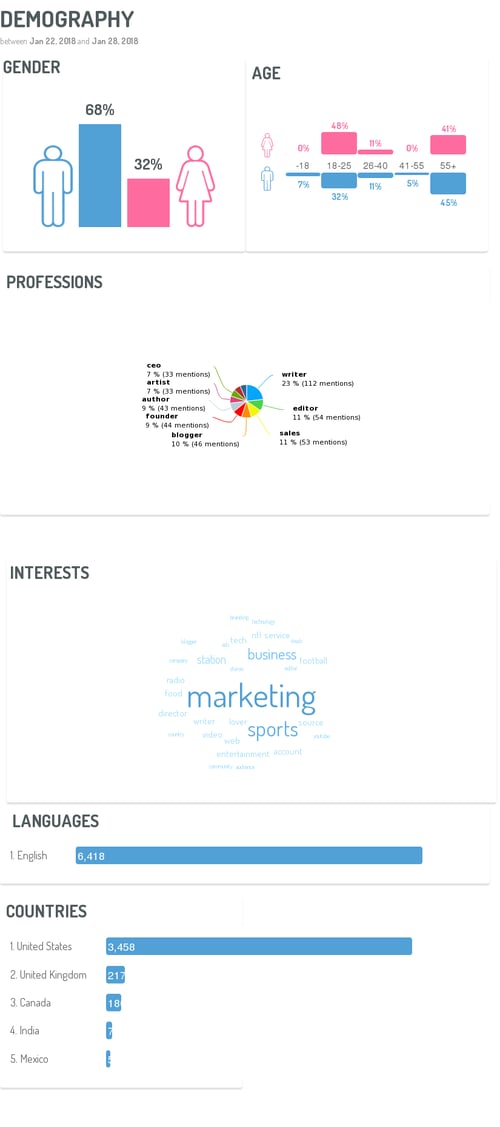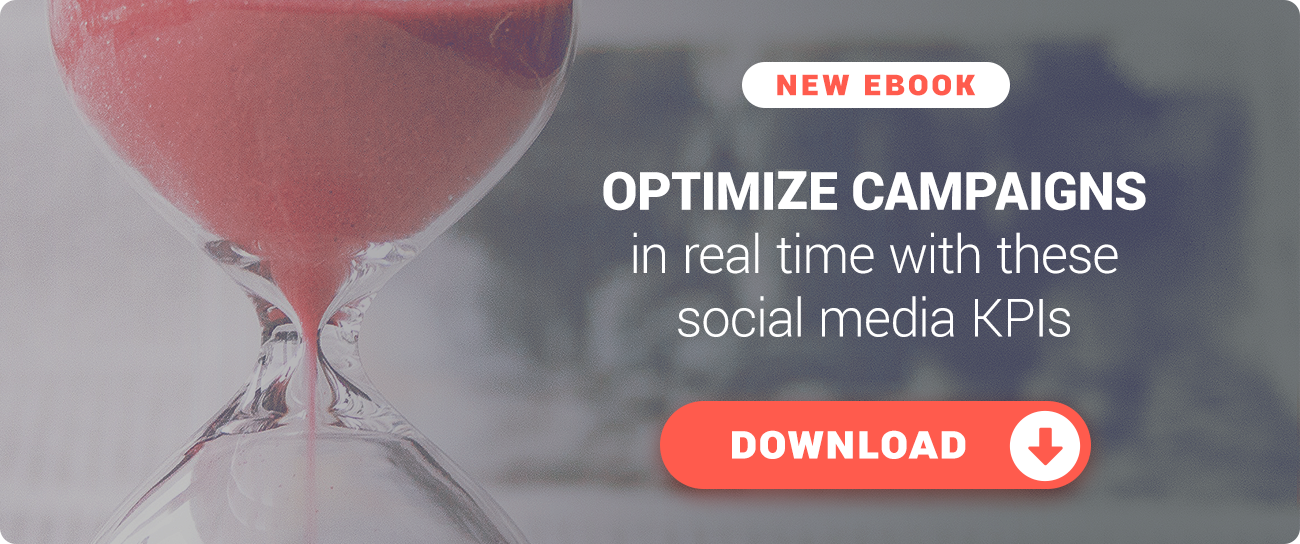Monitoring Consumer Behavior and Market Trends with Social Intelligence
According to Statista, 81% of Americans have a social media profile in 2017, which represents a 5% growth from the previous year. For brands, this means that they have access to consumer data and customer profiles that were not previously available. A huge number of conversations occur on the internet, and a large part of this information is publicly accessible. With the help of social intelligence and monitoring tools, it’s possible to access and analyze these insights. Social media is a very unique source of quality information as consumers tend to express themselves more spontaneously than they would when answering a satisfaction questionnaire, or when using a customer review website like TripAdvisor, for example.
Social listening offers brands a real-time view of consumer behavior, the competitive landscape, and market trend analysis - all at a lower cost of time, resources, and effort. Among other things, integrating social listening into your brand’s strategy will enable you to:
- Track search engine trends, which may be helpful in identifying customer preferences to inform product development, for example.
- Aid sales and marketing in forecasting, adjusting budgets, and in optimizing marketing and advertising strategies.
Below you’ll find three strategies for analyzing consumer behaviors and anticipating market trends.
1. Search Engine Analysis
Monitoring search engine trends enables brands to understand customer values, expectations, and needs. A recent study published by the American Marketing Association examined the predictive power of search keywords to analyze how marketers can measure, analyze, and exploit big data. Within the report was a case study on an American automotive brand that analyzed search engine trends in order to compare search volume between different features of one of the brand’s vehicles. In effect, the brand felt that internal communications between product development needed to be strengthened, and subsequently began integrating this data into the development.
 A sample search engine analysis, via Digimind Social.
A sample search engine analysis, via Digimind Social. 2. Monitoring the Purchase Process
Monitoring online conversations allows brands to monitor customer feedback, brand reputation, and consumer habits. In order to detect market trends, it’s useful to collect as much information as possible about consumers in order to get an overview of your target audience, their behavior, preferences, and interests. This data can inform analysis at various points along the customer journey.
 A sample demographic report, via Digimind Social.
A sample demographic report, via Digimind Social.
If you want this data to be useful for detecting trends, it's best to gather as much information as you can about consumers to get an overview of your audience, their behavior, preferences, likes, and feelings. This analysis can be performed according to the different points of contact of the customer journey and can be helpful in answering the following questions:
- Which topics are most commonly discussed in relation to the brand’s products?
- At which stage of the purchase process do these discussions occur?
- On which channels and in which geographic areas are these conversations concentrated?
- What is the sentiment associated with these conversations, and how do they differ across media channels?
- Who are the most active users, and who is leading the conversations?
- Are there any emerging trends or themes within these conversation spaces?
The following KPIs are useful in monitoring consumer behaviors:
- Key Concepts: volume of mentions by key concept can be a useful indicator of trends or areas of concern
- Demographic Profiling: sex, age, geolocation, profession, etc.
- Volume of Mentions: analysis of trends in mentions and comparison by period
- Sentiment Analysis: an indication of positive, negative, or neutral emotion in association with a particular concept or subject
- Influencers: detection of individuals or brands who generate the most buzz surrounding a concept, theme, or network
3. Competitive Benchmarking
When performing a competitive analysis, brands often analyze customer reactions regarding issues like product launches, product features, or customer service. While practices may vary depending on a brand’s objectives, here are some general best practices:
- Benchmark campaigns and actions against strategies previously launched by competitors in order to compare KPIs and detect commonalities
- Monitor product feedback in order to determine the most impactful channels and key terms which generate the largest volume of mentions
Indicators of campaign visibility, like reach, share of voice, engagement, influencers, media placements, hashtag use, and UGC are all incredibly useful in revealing consumer habits. A well-integrated social intelligence tool can enable your brand to perform competitive analyses in any sector. Classification tags can also be used to highlight key themes throughout a market. For example, if a leading beverage brand wanted to know what consumers were saying about their soft drinks, they could group and track conversations which referred to a specific topic in order to see the volume of mentions surrounding this topic or to evaluate the topic’s relevance to a specific brand.
 A sample share of voice graphic between classification tags, via Digimind Social.
A sample share of voice graphic between classification tags, via Digimind Social.To summarize, social intelligence enables brands to:
- Understand current and future market trends
- Detect disruptive technologies and innovations as they emerge
- Understand the needs, behaviors, and consumptions habits of their target audiences
- Track research trends in order to design products which are well-aligned with customer needs and expectations
- Gather information regarding public interest surrounding existing innovations, technologies, and products, which enables brands to predict demand trends and thereby efficiently allocate production budget
Influencer Marketing: Inside a Viral Campaign
The Top KPIs for Proving Marketing ROI

